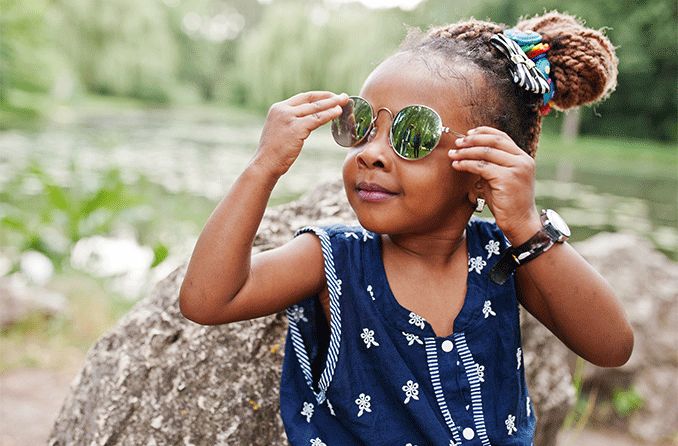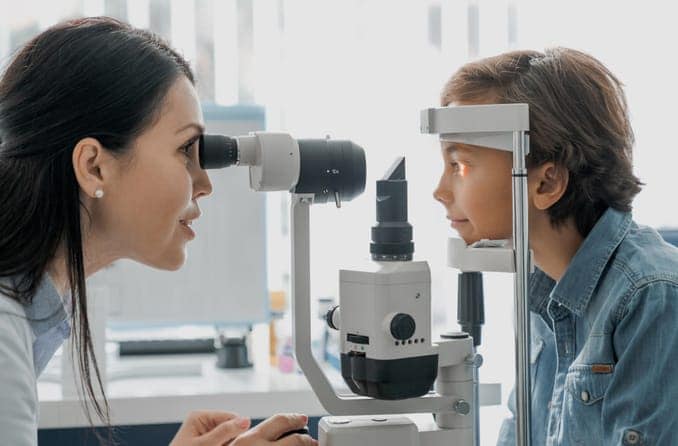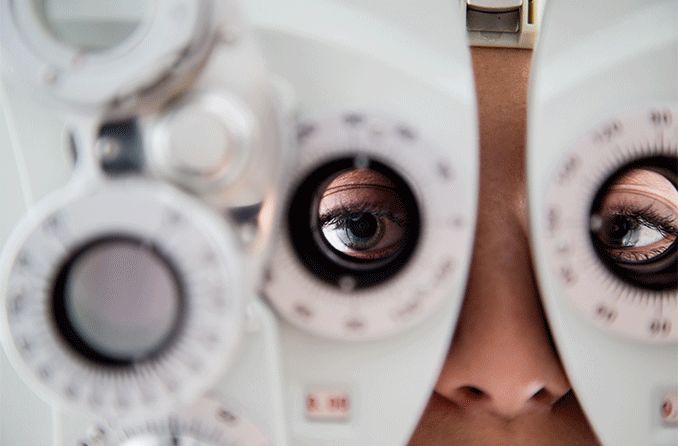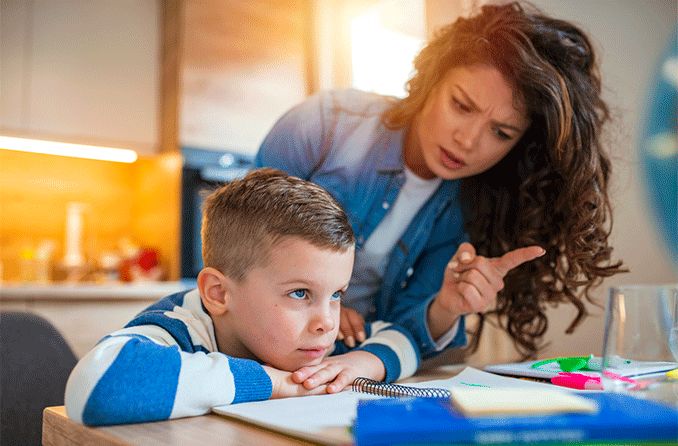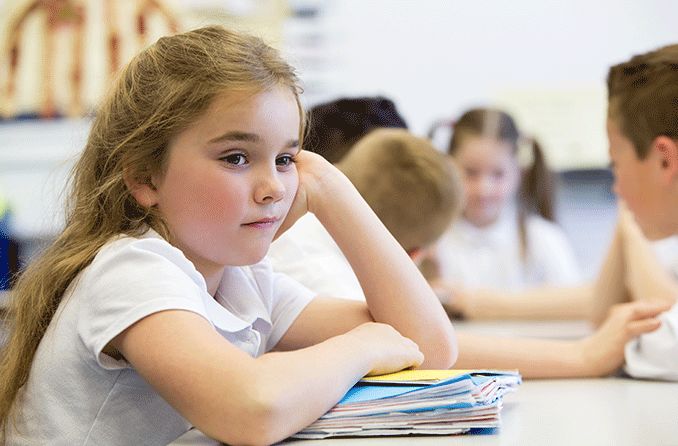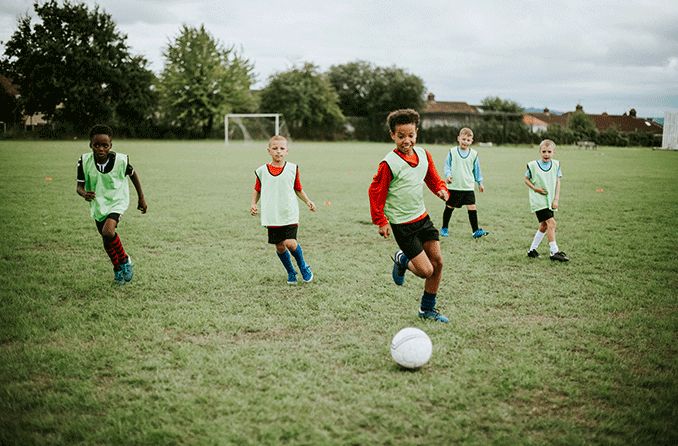Sunglasses for kids are more than just a cute accessory — they’re a crucial part of children’s vision health, and a sun-healthy habit kids can learn at any age.
Most parents and caregivers already know about using sunscreen for time spent outside, but it’s also important to protect your child’s eyes from the sun. Knowing how kids’ sunglasses work to protect their vision and which types are most effective — as well as where to select and purchase them — can help you find just the right pair for your little one.
Why kids should wear sunglasses
Outdoor play is great for kids, as it can help improve sleep, provide fresh air and exercise and potentially even prevent nearsightedness. But, just as kids need to protect their skin from harmful ultraviolet (UV) rays during time spent outside, they also need to shield their eyes from damaging effects of the sun.
According toThe American Academy of Ophthalmology, when unprotected eyes are exposed to the sun’s UV rays, especially over a long period of time, it can cause:
- Increased risk of eye disease (cataracts, macular degeneration, etc.).
- Increased risk of rare eye cancer.
- Eye growths, including pterygium, which can begin appearing as early as the teenage years.
- Photokeratitis, a painful type of sunburn caused by the sun’s reflection off the water, which can make eyes red and sensitive or even cause a short-term loss of vision. (This is also called “snow blindness.”)
The good news? All of the above are preventable with the consistent use of sunglasses when you and your children are outdoors. Knowing a little more about how sunglasses work to protect vision — as well as what to look for to best suit each child’s needs — can help parents safely embrace the sunshine for their little ones.
Year-round eye protection with kids’ sunglasses
Do kids really need to wear sunglasses even if it’s not bright and sunny? Yes! Kids should wear sunglasses whenever they’re spending time outside, in any season.
This is especially true during winter in certain climates, as snow is even more reflective than water, and sunglasses can help protect your child against snow blindness. Healthychildren.org, a parenting publication of the American Academy of Pediatrics, offers 10 Reasons Kids Should Wear Sunglasses in Winter, with additional tips and signs for spotting snow blindness in young children.
No matter the time of year, it’s important to remember that, even on a cloudy day, UV rays can penetrate the clouds to reach your children’s eyes, so it’s best to have them wear sunglasses every day — even if they’re very young.
SEE RELATED: Choosing the best sunglasses for kids
Best age to start wearing sunglasses
As soon as your child will start wearing them, they can (and should) wear sunglasses — even baby sunglasses are recommended for infants younger than a year old, as long as they meet the right safety requirements. The American Academy of Pediatrics also recommends keeping infants under 6 months out of direct sunlight whenever possible.
Little kids’ sunglasses should be designed with safety in mind. Watch out for small parts and rigid, breakable plastic. If your infant or toddler is prone to chewing on things, you may want to take the sunglasses away when you aren’t able to supervise closely, like when your child is in their car seat and you’re driving.
Of course, you’ll need to make sure your child is ready to keep the sunglasses on. Some kids will naturally wear them more readily than others. If you have sunglasses on hand, you can keep trying them with your young child — as they grow, they’ll be able to wear their sunglasses more consistently and, hopefully, form a habit for life.
What to look for when choosing sunglasses
There are a few factors to consider when buying sunglasses for your kids, UV protection and durability among them. Things to look for in children’s sunglasses include:
Effective UV Protection — This is the most important element to consider. You’ll want shades that offer broad spectrum coverage, blocking 100 percent of both UVA and UVB radiation. (This is sometimes also marked as UV400). Avoid kids’ toy sunglasses or novelty sunglasses that are tinted but don’t offer adequate UV protection.
Size — Bigger is better when it comes to sunglasses. The Mayo Clinic recommends looking for a big pair, like the oversized types worn by movie stars and models. Not only do these shield the eyes most effectively, they also protect the delicate, thin skin around the eye itself. Look for a pair that covers more of the face, which offers better coverage to protect eyes and skin alike. Kids’ aviators sunglasses are great for this, as are kids’ wrap-around sunglasses.
Fit — Related to size, sunglasses should also fit well (snug without being too tight) and offer a good amount of coverage over the face. Your local vision care provider is a great resource for finding sunglasses that have the right fit for your child.
Durability — Kids tend to be rough on all their possessions. Look for sturdy, durable sunglasses that won’t snap or shatter easily. While truly unbreakable kids’ sunglasses might not yet exist, there are many options that can take a beating and withstand the regular wear of daily use. Polycarbonate lenses, for instance, are specially crafted to avoid shattering. Some manufacturers also create flexible kids’ sunglasses that can bend without breaking.
Activity-appropriate — Kids’ sport sunglasses can help shield eyes during athletic activities; you can even find different tints on lenses to ensure the contrast stays at the correct level. Alternatively, when you’re looking for sunglasses for casual wear (protection needed while walking to school, for example), the more important factors are size and effectiveness at shielding from UVA and UVB rays.
Style — When kids like their sunglasses, they’re much more likely to wear them! For some kids, this might mean colorful character frames; others might prefer kids’ designer sunglasses with a cool vibe or just frames in their favorite color. Showing your kids a few options to pick from is a great way to involve them in the process and help increase their buy-in to wearing their sunglasses whenever they’re out and about.
Lens color — It’s important to note that darker lenses do not really offer more protection from sunlight. In fact, lens color and tint don’t matter as much as that all-important 100% UVA and UVB protection. When it comes to color, yellow and orange lenses tend to be good for lower-light conditions, like twilight, while darker lenses (including amber and brown) and green lenses can offer greater contrast.
Kids’ polarized sunglasses
In general, kids’ polarized sunglasses are most helpful if you’re looking to reduce glare, which occurs when light bounces off reflective surfaces like water or snow. (Adults also find them helpful for driving.) They don’t protect eyes any differently than non-polarized lenses.
Whether your kids are playing near water (such as when visiting the pool, going to the beach or boating) or in the snow (skiing, climbing on snow hills, etc.) — or you simply don’t want glare to interfere with sports — polarized sunglasses can be your best bet.
Sports sunglasses for kids
Children who play sports can benefit from wearing specialized kid-sized sports sunglasses, which may be polarized to reduce distracting glare, as well as tinted in order to maintain the correct amount of contrast needed so that kids can see the ball coming or keep an eye on other players.
Sports goggle sunglasses can also be designed to help prevent sports-related eye injuries from sports like basketball or soccer. They offer protection against cuts and bruises as well as UV protection.
Additionally, snow goggles often incorporate UV protection in order to shield against snow blindness. Kids who engage in winter sports like skiing or snowboarding should always wear snow goggles. This is especially important at high altitudes.
Prescription kids’ sunglasses
Children who wear prescription glasses may also benefit from kids’ prescription sunglasses. These special sunglasses combine your child’s prescription with UV protection to both correct their vision and keep eyes safe from UV rays.
If your child does opt for prescription sunglasses, be sure to update the sunglasses prescription whenever their regular eyeglasses prescription changes. Kids’ eyes can change rapidly, so check with an eye doctor near you to make sure they have the right prescription — using an outdated prescription can cause eye strain, headaches and discomfort seeing clearly while outdoors.
You can also buy kids’ clip-on sunglasses, which attach directly to their regular prescription eyeglasses and add sun protection that way. These are usually a less expensive choice, and allow kids to take advantage of the glasses they’re already wearing — while also potentially reducing the chances of losing their regular eyeglasses or their sunglasses.
Of course, kids also have to keep track of the clip-ons. So, if you find that your child is losing the clip-on shades (or doesn’t like the way they look), it might be time to consider prescription sunglasses.
Another option? Photochromic or transition lenses, which become darker when exposed to UV light. Check with your eye doctor for more information and to see whether these lenses might be a good choice for your child.
SEE RELATED: What are polarized sunglasses?
Where to buy kids’ sunglasses
Where (and how) you select and purchase sunglasses will largely depend on which type of eye protection is right for your child.
An eye doctor is your best bet for prescription sunglasses and kids’ sport sunglasses that can be properly fitted to the face. Ask about sunglasses during your next appointment or stop by to browse the options in stock. If your child already has a glasses prescription, your vision care provider should be able to use the same one for their sunglasses.
An optician or ophthalmologist can also ensure sunglasses have a good fit, which is a key part of ensuring your children actually wear the sunglasses and that they stay on their faces.
Alternatively, if you’re looking for cheap kids’ sunglasses that you won’t mind accidentally leaving behind at the beach, you can shop at local retailers or online. This is a great option for non-prescriptive sunglasses. Just be sure to check those labels for 100% UVA and UVB protection — and remember, novelty sunglasses won’t offer any actual protection from the sun’s rays.
You may even want to buy a few backup pairs to leave in the car, stash in a diaper bag, throw into your pool bag or keep with outdoor toys — wherever they’ll be on hand when the kids are playing outdoors.
How to keep kids from losing sunglasses
Once you have sunglasses to protect your kid’s eyes, how do you keep glasses from getting lost? After all, sunglasses are small and easy to lose, especially when they go on and off between outdoors and indoors.
One solution: kids’ sunglasses straps. These prevent glasses from falling off while playing, which is great for kids who are active outdoors or hitting the playground. Straps can be purchased separately or you can look for kids’ sunglasses with straps already attached. Some straps are adjustable to “grow” along with your child.
Kids’ sunglasses cases can also help ensure that sunglasses make it back home. Hard-shell cases help protect the glasses and are great for packing inside diaper bags or sending to school in a backpack, while soft cases make it easy to see at a glance whether the sunglasses are inside.
You can affix a label to the case, as well as to the inside of the earpiece, so that pairs misplaced at school make it back to you.
Setting kids up for a lifetime of healthy vision
Good sun safety habits and proper eye protection can be introduced early in your child’s development, which helps to set them up for a lifetime of healthy vision.
Just remember to set a good example yourself — adults need sunglasses in all the same situations as children do, and seeing you wear sunglasses can help normalize them to children. Help establish the habit and give kids the tools they need for safe play outside, too.
